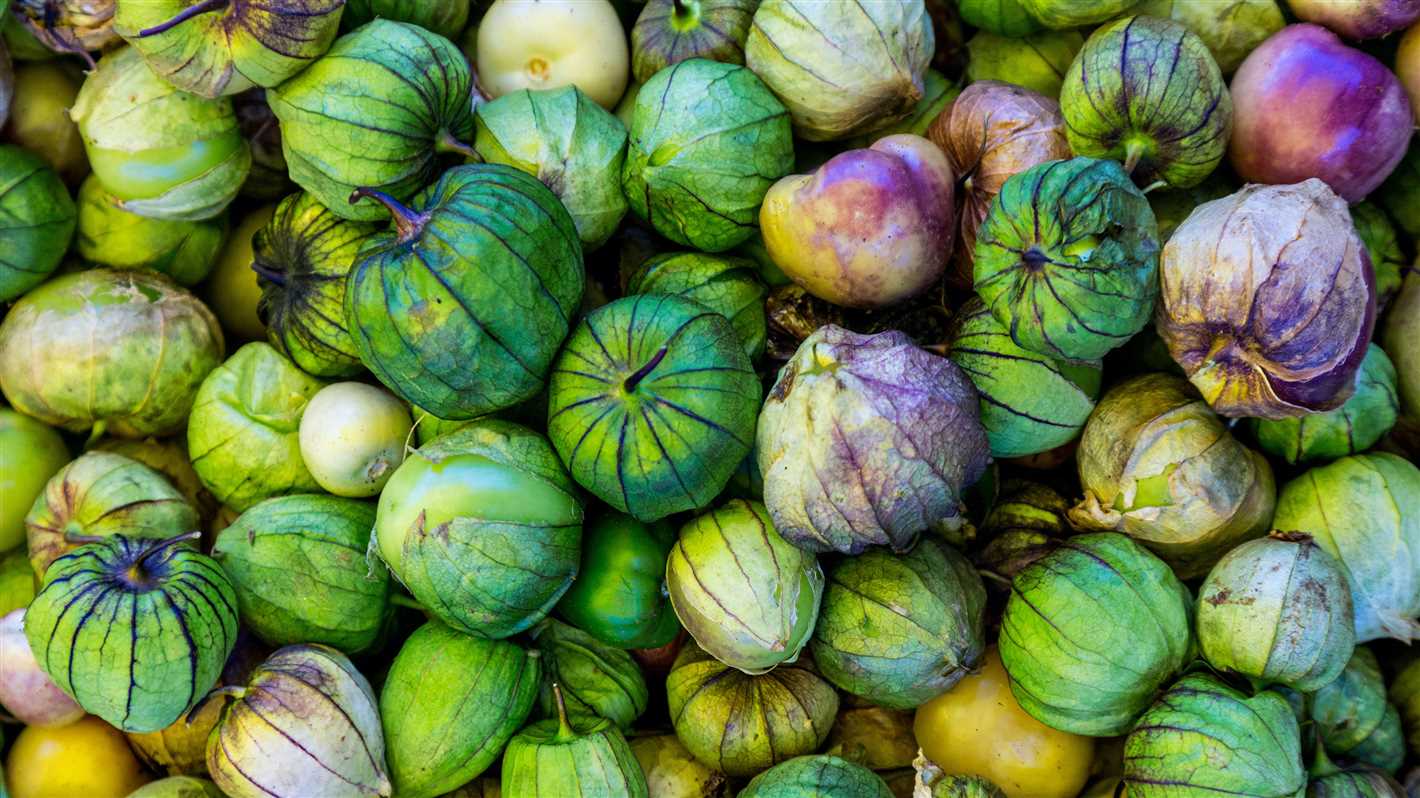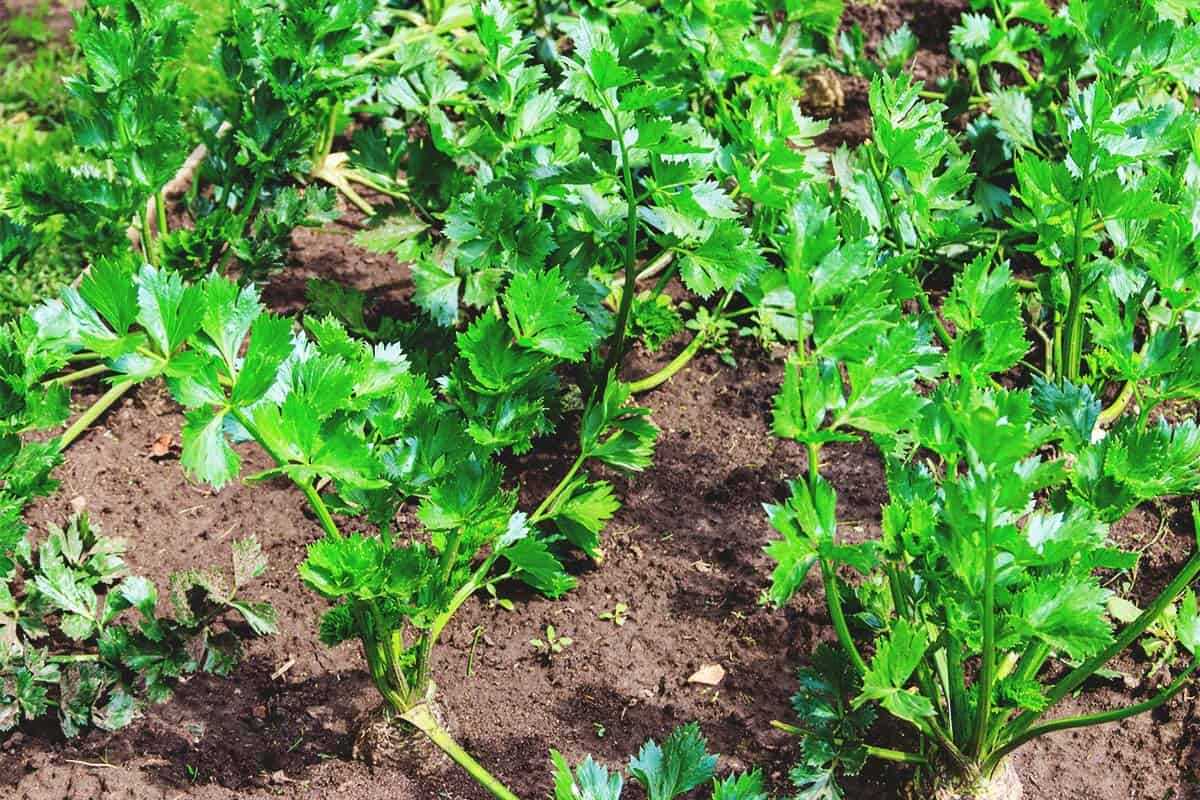- Improve Crop Yields
- Benefits of Improved Crop Yields:
- Extend Growing Season
- Early Harvests
- Disease and Pest Resistance
- Longer Storage Life
- Nutritional Benefits
- Increased Flavor
- Gardening Satisfaction
- 1. Connecting with Nature
- 2. Physical Activity
- 3. Stress Relief
- 4. Creative Outlet
- 5. Social Interaction
- 6. Growing Your Own Food
- 7. Mental Stimulation
- 8. Environmental Impact
- “Question-Answer”
- Why is it beneficial to plant large-fruited celery in February?
- What are the advantages of planting celery in February instead of later in the year?
- Can I plant regular celery in February instead of large-fruited celery?
- What is the ideal growing environment for large-fruited celery?
- What can I do to ensure a successful harvest of large-fruited celery?
- Can I grow large-fruited celery in containers?
- “Video” How to Grow Celery – Complete Growing Guide
In recent years, there has been a growing trend among gardening enthusiasts to plant large-fruited celery in February. This early planting strategy has gained popularity due to its numerous benefits and the potential for maximizing harvests. If you’re looking to make the most of your gardening efforts, planting large-fruited celery in February might just be the solution you’ve been searching for.
One of the main advantages of planting large-fruited celery in February is the extended growing season it allows. By starting your celery seeds early, you give them a head start on growth, resulting in larger and more abundant fruits. This can be especially beneficial for those who want to enjoy a bountiful harvest of crisp and flavorful celery throughout the summer months.
Furthermore, planting large-fruited celery in February can help you beat the heat. Celery is a cool-season crop that prefers cooler temperatures for optimal growth. By starting the seeds in February, you can take advantage of the cooler weather and avoid the potential stress of extreme summer heat. This can ultimately lead to healthier plants and higher yields.
Lastly, planting large-fruited celery in February gives you a jumpstart on the gardening season. While many gardeners wait until spring to start their outdoor planting, those who choose to plant celery in February can enjoy early yields and a head start on their gardening goals. Not only does this allow for a longer growing season, but it also helps mitigate the risk of pests and diseases that tend to emerge later in the season.
By planting large-fruited celery in February, you can maximize your harvests, enjoy an extended growing season, beat the heat, and get a head start on your gardening endeavors. Whether you’re a seasoned gardener or just starting out, this early planting strategy can offer numerous benefits and help you reap the rewards of a bountiful celery harvest.
Improve Crop Yields
A major benefit of planting large-fruited celery in February is the significant improvement in crop yields. By starting the cultivation process earlier in the year, you give the plants more time to grow and develop, resulting in larger and more abundant fruits at harvest time.
Planting in February allows the celery plants to establish strong root systems and develop sturdy stems and foliage, which are crucial for supporting the weight of the large fruits. The longer growing period also allows the plants to absorb more nutrients from the soil, resulting in healthier and more productive crops.
Furthermore, planting large-fruited celery in February can help you take advantage of optimal weather conditions. February typically experiences cooler temperatures and more consistent moisture levels, creating ideal growing conditions for celery. This leads to better overall plant health and reduces the risk of diseases or pests that can hinder crop yields.
In addition to increased crop yields, planting large-fruited celery in February can also contribute to better crop quality. The longer growing period allows the plants to develop more intense flavors and textures, making for a more enjoyable culinary experience.
To maximize your crop yields, it is important to provide proper care and maintenance throughout the growing season. This includes regular watering, fertilization, and pest control measures. Additionally, pruning and thinning the plants can help direct their energy toward fruit production, further enhancing crop yields.
Benefits of Improved Crop Yields:

- Higher quantity of large-fruited celery at harvest time
- Increased market value and potential for profit
- Greater availability of fresh celery for personal consumption or culinary use
- Opportunity to share or sell surplus celery with friends, family, or local community
- Potential for preserving celery through canning, freezing, or other methods for later use
By planting large-fruited celery in February and focusing on improving crop yields, you can enjoy a bountiful harvest and reap the many benefits of this delicious and versatile vegetable.
Extend Growing Season

By planting large-fruited celery in February, you can extend the growing season and enjoy fresh celery for a longer period of time.
Celery is a cool season crop that thrives in cooler temperatures. By starting the growing process in February, you can take advantage of the cooler spring and fall weather, which is ideal for celery growth.
Planting early allows the celery plants to establish strong root systems and develop robust foliage before the hot summer months arrive. This can help protect the plants from heat stress and ensure healthier growth throughout the season.
In regions with longer frost-free periods, planting large-fruited celery in February can enable you to harvest multiple crops from the same plants. By harvesting outer stems and leaving the center stalks to continue growing, you can enjoy a continuous supply of fresh celery throughout the growing season.
Early Harvests

Planting large-fruited celery in February allows for early harvests. By starting your celery plants early in the year, you can take advantage of the cool weather and give your plants a head start on growth.
Celery is a cool-season crop that thrives in temperatures between 60°F and 70°F (15°C and 21°C). By planting in February, you can take advantage of the cooler temperatures of late winter and early spring, which are ideal for celery growth.
The early planting also allows for a longer growing season, giving your celery plants more time to mature and produce a larger harvest. By the time summer arrives, your plants will be well-established and will have had ample time to develop large, flavorful stalks.
Additionally, planting in February allows you to avoid the stress of hot summer temperatures, which can cause celery plants to bolt and become bitter. By harvesting your celery early, you can enjoy the crisp, tender stalks before the heat of summer takes its toll.
In conclusion, planting large-fruited celery in February can lead to early harvests and maximize your yields. By taking advantage of the cool weather and longer growing season, you can enjoy a bountiful crop of delicious, homegrown celery. So why wait? Start your celery seeds early and reap the benefits of an early harvest!
Disease and Pest Resistance
One of the major benefits of planting large-fruited celery in February is its enhanced disease and pest resistance. Large-fruited celery varieties have been bred to be more resilient against common diseases and pests that can affect celery crops.
One common disease that affects celery is leaf blight, which can be caused by various fungi. Planting large-fruited celery in February allows the plants to establish strong root systems and develop resistance to leaf blight. Additionally, the larger size of the plants provides more surface area for disease resistance mechanisms to be activated.
Pests such as aphids and celery worms can also be a problem for celery crops. Planting large-fruited celery early in the year gives the plants a head start and allows them to grow larger before these pests become active. The larger size of the plants can deter pests and make it more difficult for them to cause significant damage.
Furthermore, large-fruited celery varieties often have thicker, more robust stems and leaves, which can provide a physical barrier against pests. These varieties may also have natural chemical compounds that repel pests or make the plants less appetizing to them.
Overall, planting large-fruited celery in February can help maximize your harvests by ensuring that your crops are more resistant to diseases and pests. This can result in healthier plants, higher yields, and less reliance on chemical pesticides.
Longer Storage Life
Planting large-fruited celery in February can result in a longer storage life for your crop. By starting early, your celery plants have more time to develop and grow, allowing them to reach their full potential. This means that when it comes time to harvest, you’ll have larger, more mature celery stalks that are less prone to spoilage.
The larger size of the celery stalks can also help to extend their storage life. Larger stalks tend to have a higher water content, which helps to keep them crisp and fresh for longer periods of time. In addition, the thicker stalks of large-fruited celery provide more protection against drying out, which can further extend their storage life.
- Planting large-fruited celery in February allows for a longer growing season, resulting in larger, more mature stalks.
- Larger celery stalks have a higher water content, which helps to keep them crisp and fresh for longer periods of time.
- The thicker stalks of large-fruited celery provide more protection against drying out, extending their storage life.
To maximize the storage life of your celery, it’s important to harvest it properly. Cut the stalks close to the base of the plant, leaving about an inch of the stalk attached. Avoid washing the celery before storage, as moisture can promote rot. Instead, gently brush off any dirt or debris and store the celery in a plastic bag or container in the refrigerator.
With the benefits of longer storage life, planting large-fruited celery in February can help to ensure that you have a bountiful supply of fresh, crisp celery throughout the year.
Nutritional Benefits
Large-fruited celery is not only delicious, but it also offers a wide range of nutritional benefits. Here are some of the key nutrients found in celery:
Vitamin K: Large-fruited celery is a great source of vitamin K, which is essential for blood clotting and bone health.
Vitamin C: Celery is rich in vitamin C, a powerful antioxidant that boosts the immune system and promotes healthy skin.
Folate: Celery contains folate, a B-vitamin that supports cell growth and helps prevent certain birth defects.
Potassium: This vegetable is also a good source of potassium, an electrolyte that helps regulate blood pressure and fluid balance.
Dietary Fiber: Large-fruited celery is high in dietary fiber, which aids digestion and can help maintain a healthy weight.
In addition to these key nutrients, celery also contains other vitamins and minerals, such as vitamin A, calcium, and magnesium. Adding large-fruited celery to your diet can provide a wide array of health benefits and contribute to a well-rounded nutritional intake.
Increased Flavor
One of the main benefits of planting large-fruited celery in February is the increased flavor that it provides. While regular celery has a subtle flavor, large-fruited celery has a more intense and concentrated taste.
The larger size of the celery allows for more flavor to develop, making it perfect for those who enjoy strong and bold flavors in their dishes. Whether you plan on using the celery in soups, stews, salads, or as a snack, the increased flavor will greatly enhance the overall taste of your meals.
In addition to the increased flavor, large-fruited celery also has a crisp and crunchy texture that adds a satisfying element to your dishes. It can provide a refreshing bite when used in fresh salads or a satisfying crunch when added to stir-fries or casseroles.
Another advantage of the increased flavor of large-fruited celery is that it can help to elevate the taste of other ingredients in a dish. The strong flavor profile can complement a wide range of ingredients, including meats, seafood, and other vegetables, creating a well-rounded and delicious meal.
Overall, planting large-fruited celery in February not only allows you to maximize your harvests, but it also provides you with celery that has an increased flavor and texture. This can greatly enhance the taste of your meals and add a new level of enjoyment to your cooking.
Gardening Satisfaction
Gardening is not only a great hobby, it also offers numerous benefits that can contribute to our overall well-being and satisfaction. Whether you have a small balcony garden or a large backyard, here are some reasons why gardening can bring you joy and fulfillment:
1. Connecting with Nature
Gardening allows us to connect with nature and appreciate its beauty. Spending time outdoors, tending to plants, and observing their growth can help us feel more connected to the natural world around us.
2. Physical Activity
Gardening is a physical activity that can provide exercise and help us stay active. Digging, planting, weeding, and watering all require movement and can contribute to improved fitness levels and overall health.
3. Stress Relief
Working in the garden can be a great way to relieve stress and promote relaxation. The act of gardening and focusing on the tasks at hand can help us shift our attention away from our worries and find a sense of calmness.
4. Creative Outlet
Gardening offers a creative outlet where we can express ourselves. Choosing the types of plants, arranging them in unique and aesthetically pleasing ways, and experimenting with different designs allow us to showcase our artistic side.
5. Social Interaction
Gardening can also provide opportunities for social interaction. Joining a gardening club or community garden allows us to meet like-minded people, share experiences, and learn from others. It can be a wonderful way to build connections and create a sense of community.
6. Growing Your Own Food
One of the most rewarding aspects of gardening is the ability to grow your own food. Planting vegetables, fruits, and herbs allows you to enjoy the satisfaction of harvesting and eating your own homegrown produce, which is not only delicious but also healthy.
7. Mental Stimulation
Gardening requires planning, problem-solving, and continuous learning. It stimulates our minds and keeps us engaged. From researching plant care to troubleshooting garden issues, gardening provides an opportunity to expand our knowledge and keep our brains active.
8. Environmental Impact

Gardening can have a positive impact on the environment. Growing plants helps improve air quality, provides habitats for beneficial insects and birds, and contributes to the overall biodiversity of an area. It allows us to contribute to creating a greener and more sustainable world.
Overall, gardening can bring a sense of satisfaction and fulfillment as we witness the growth and transformation of plants, connect with nature, and enjoy the fruits of our labor. Whether it’s a small plot or a large garden, the benefits of gardening are numerous and can have a positive impact on our well-being.
“Question-Answer”
Why is it beneficial to plant large-fruited celery in February?
Planting large-fruited celery in February maximizes your harvests because the plants have enough time to establish strong root systems and grow before the warm summer temperatures arrive.
What are the advantages of planting celery in February instead of later in the year?
By planting celery in February, you can take advantage of the cool weather, which celery plants thrive in. This leads to healthier plants and higher yields. Additionally, you can harvest your celery crop earlier, allowing for a longer growing season for other crops in your garden.
Can I plant regular celery in February instead of large-fruited celery?
While you can plant regular celery in February, planting large-fruited celery has its benefits. Large-fruited celery varieties tend to have bigger, tastier stalks, which are highly sought after by gardeners and chefs. If you want to maximize your harvests and enjoy larger stalks of celery, planting large-fruited celery is recommended.
What is the ideal growing environment for large-fruited celery?
Large-fruited celery prefers cool temperatures and moist soil. It grows best in well-drained soil enriched with organic matter. Celery also requires full sun to grow properly. By providing these ideal conditions, you can ensure that your large-fruited celery plants will thrive and produce high-quality stalks.
What can I do to ensure a successful harvest of large-fruited celery?
To ensure a successful harvest of large-fruited celery, there are a few key steps you can take. First, start by selecting a large-fruited celery variety that is suitable for your growing region. Next, prepare the soil by adding organic matter and ensuring proper drainage. Then, plant the celery seeds or seedlings in February and provide consistent moisture throughout the growing season. Finally, monitor for pests and diseases and provide necessary care such as fertilizing and staking. Following these steps will increase your chances of a bountiful celery harvest.
Can I grow large-fruited celery in containers?
Yes, you can grow large-fruited celery in containers. Select a large enough container with good drainage and fill it with a well-draining potting mix. Place the container in a location that receives full sun. Keep the soil consistently moist and provide regular fertilization. Container-grown celery may require more frequent watering than celery grown in the ground. With proper care, you can successfully grow large-fruited celery in containers and enjoy a bountiful harvest.







